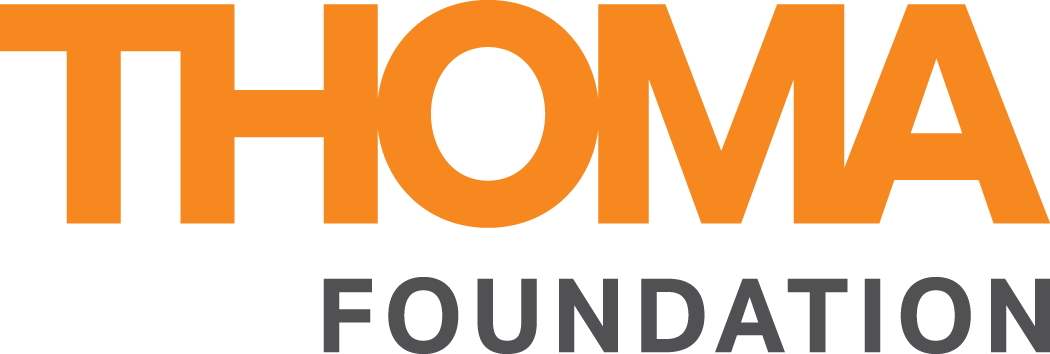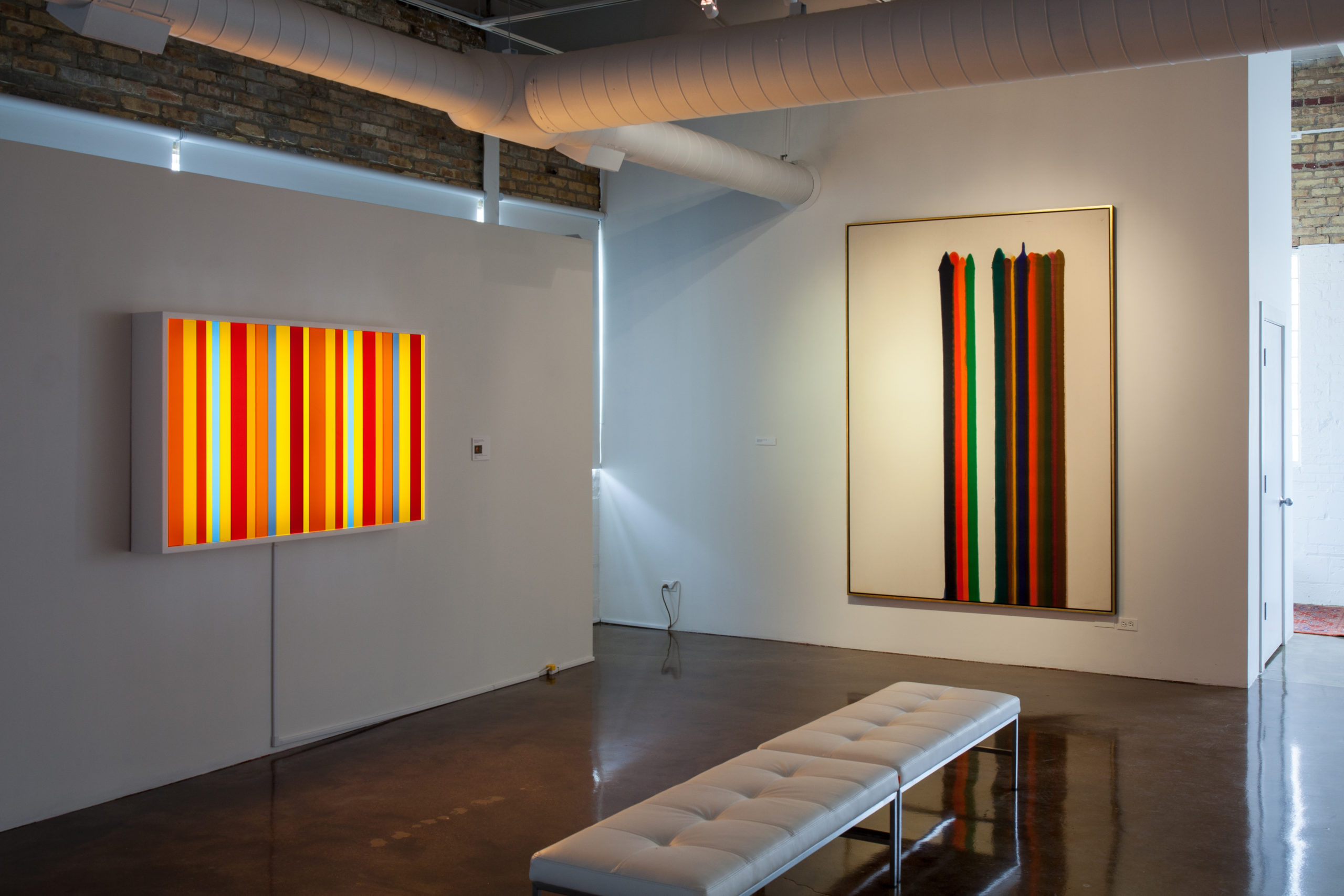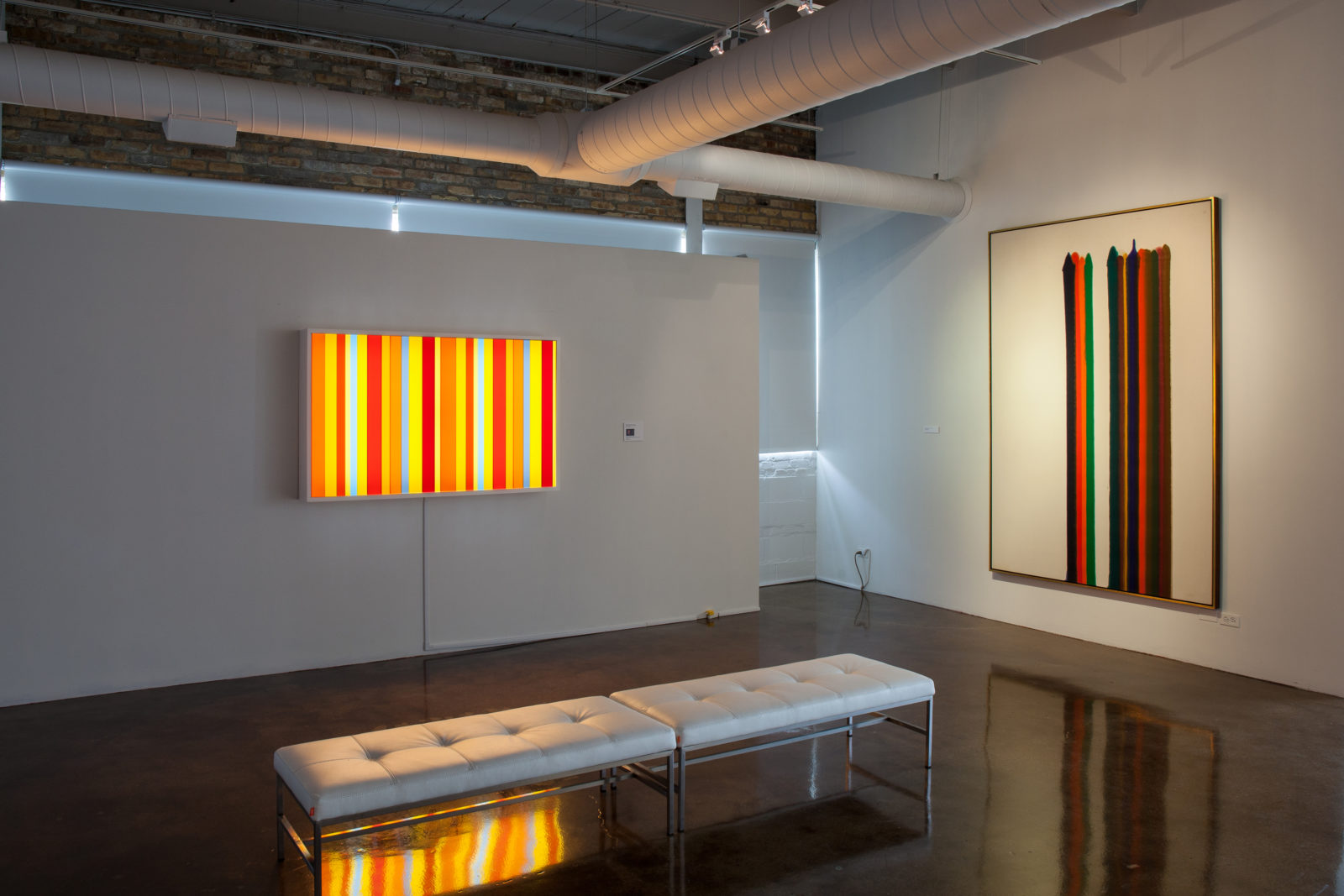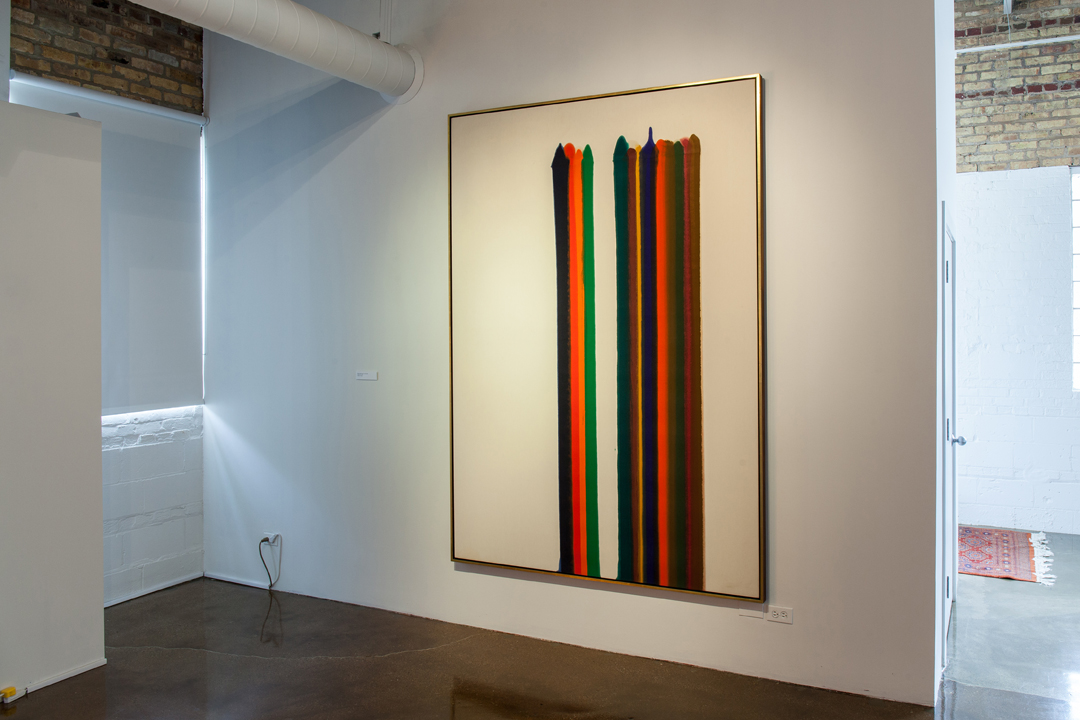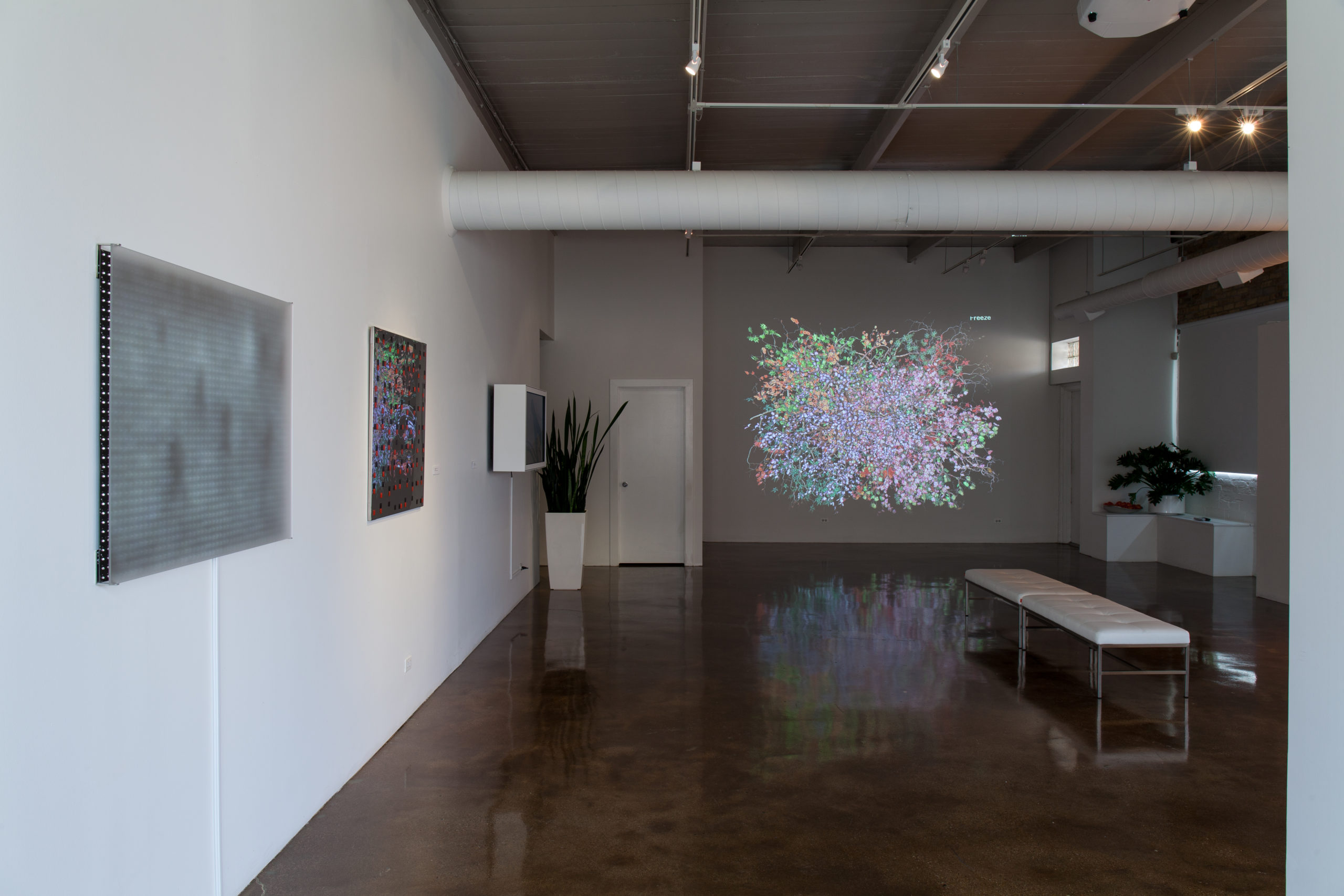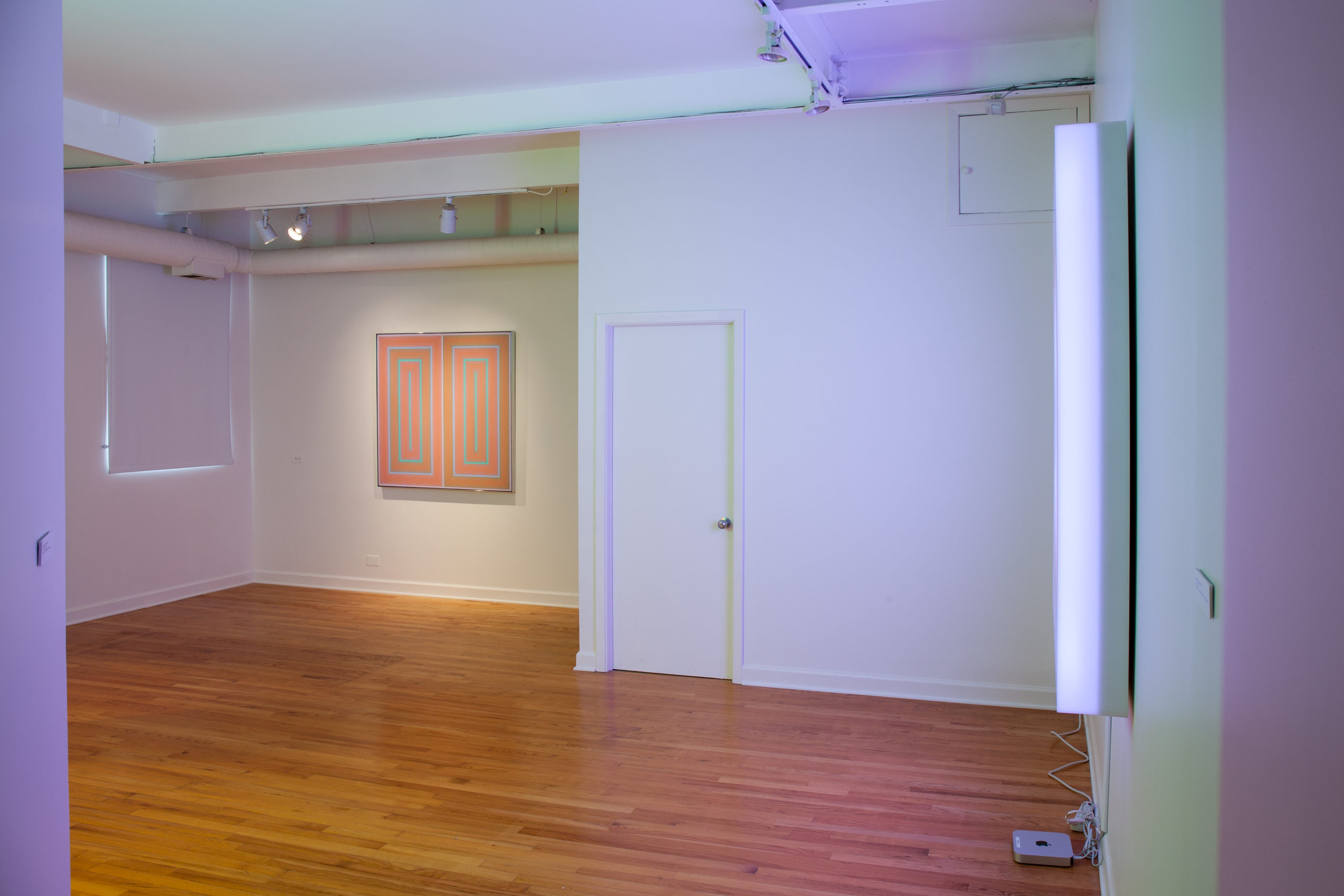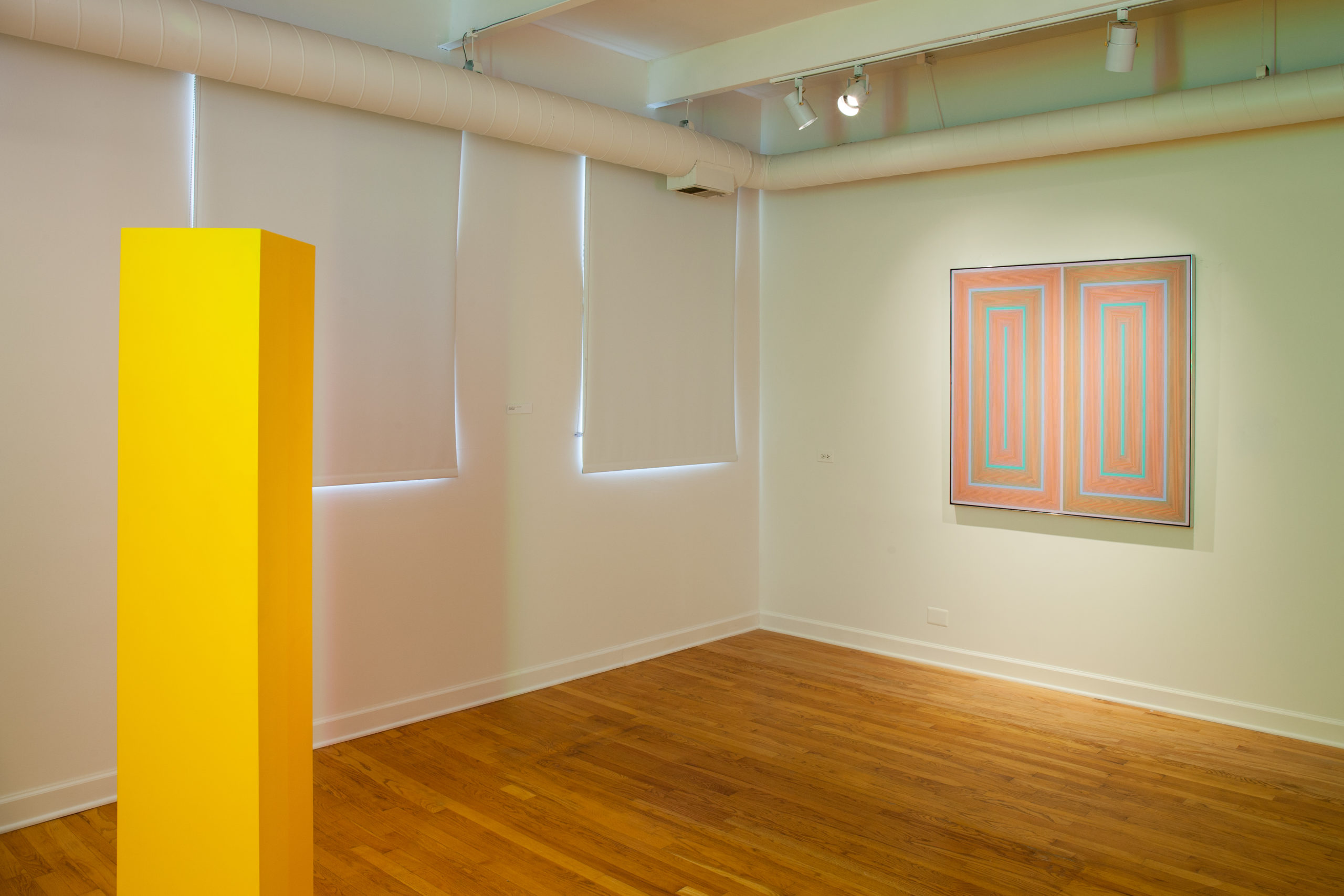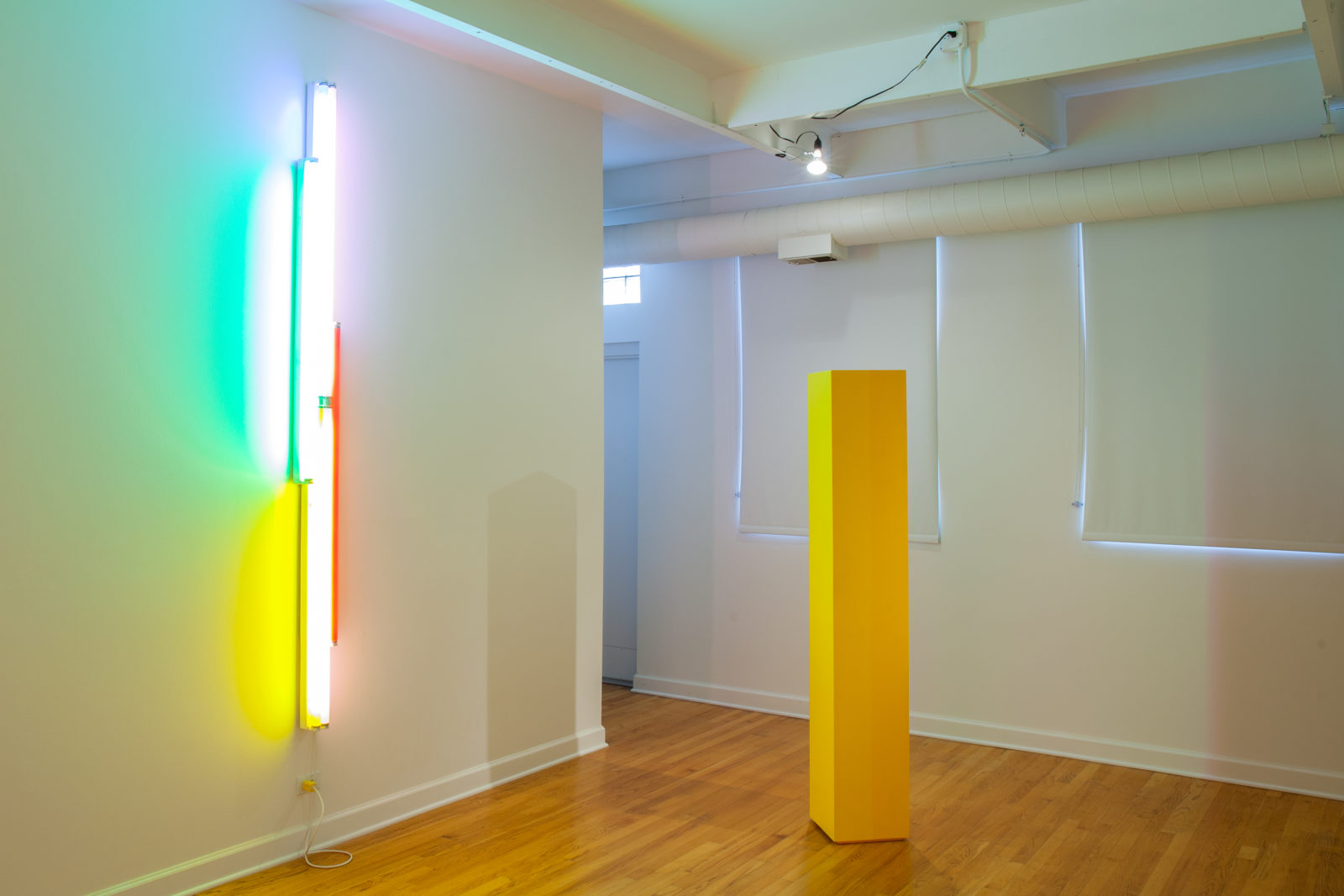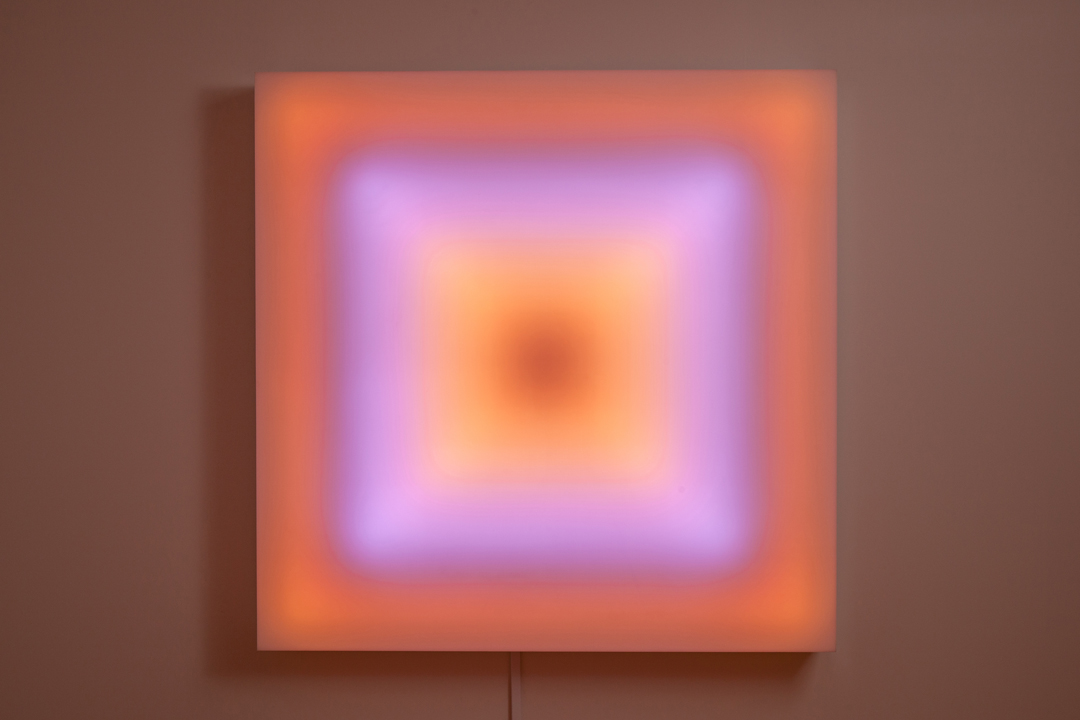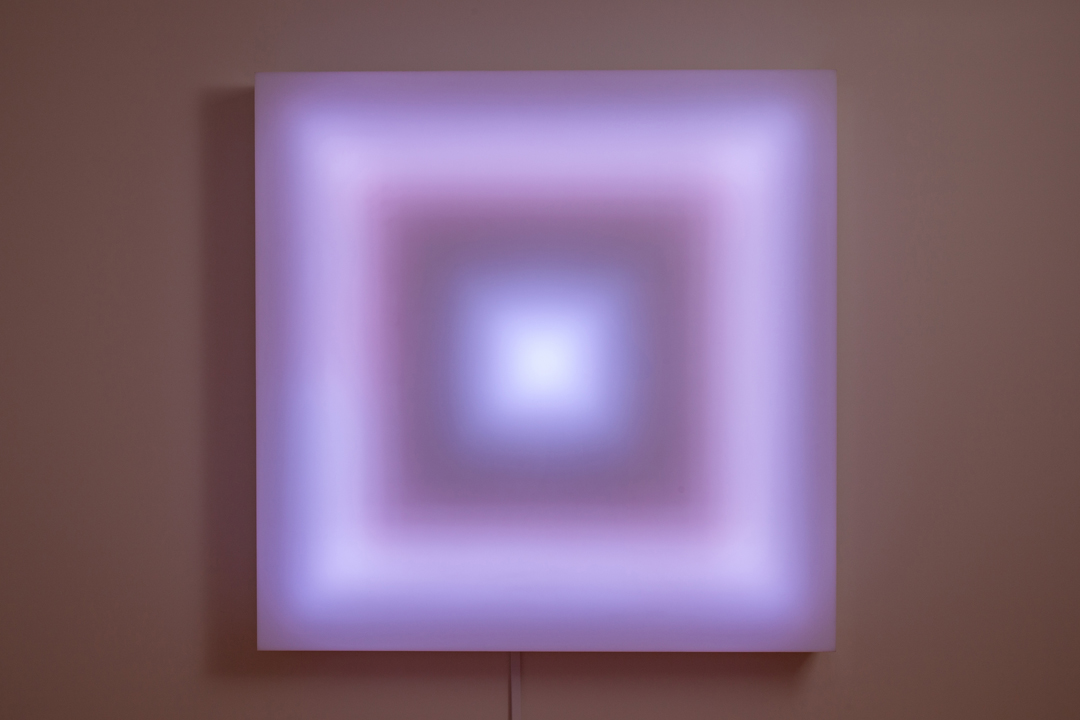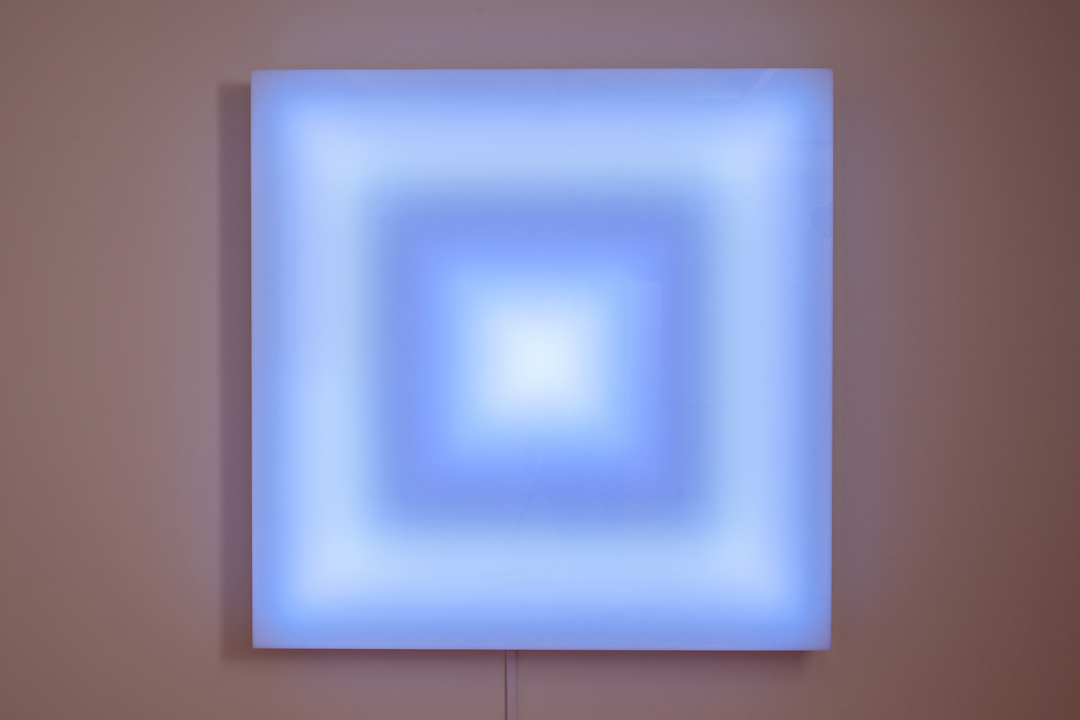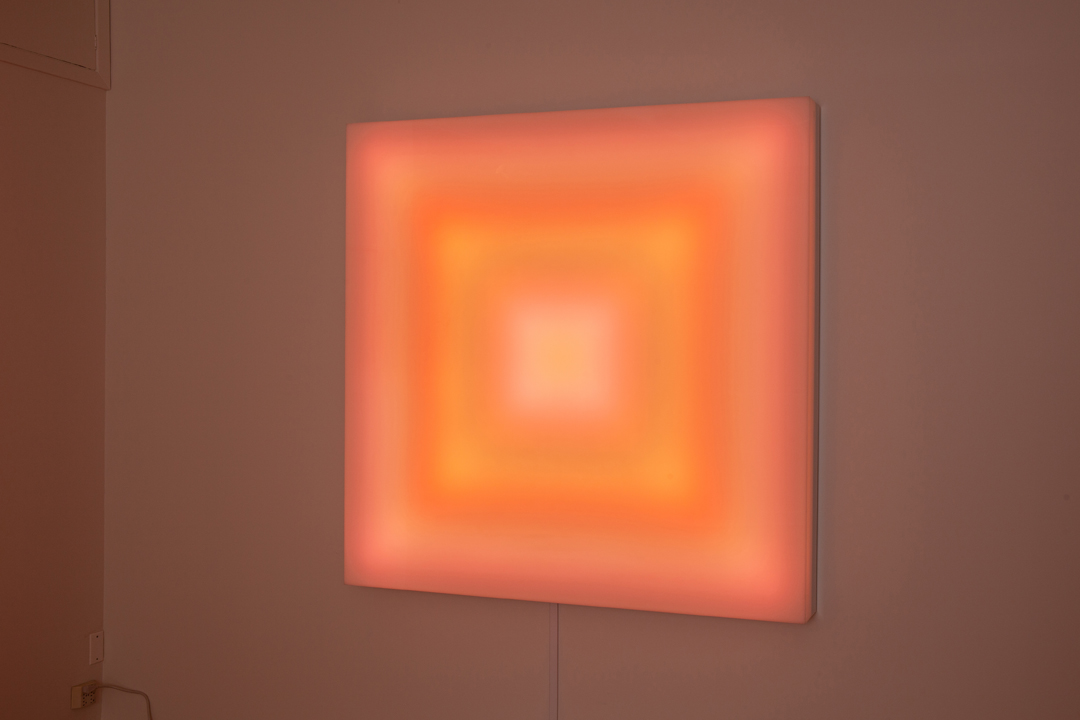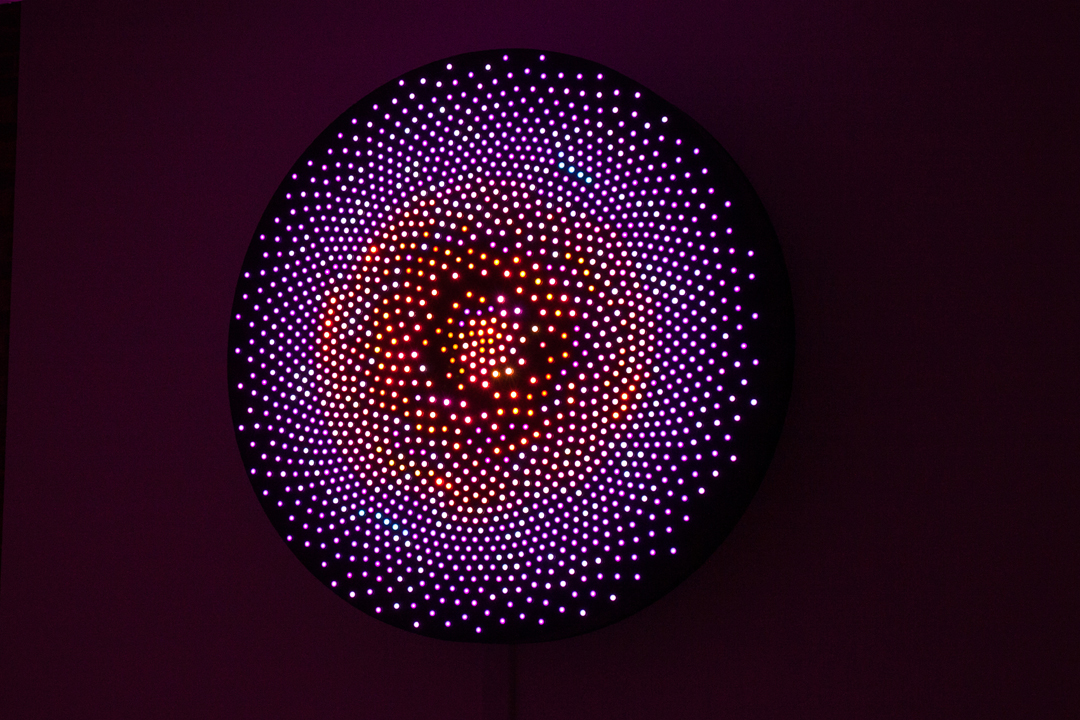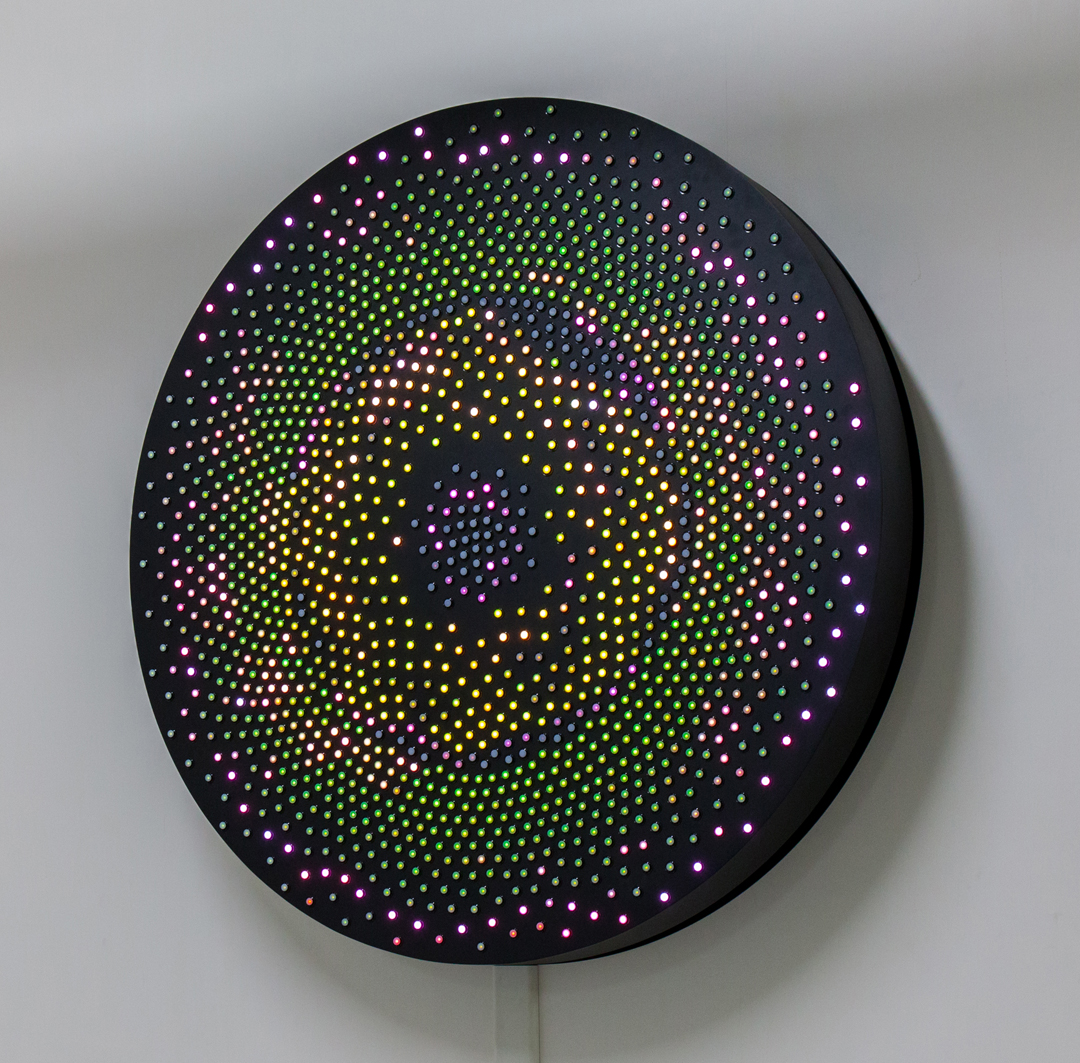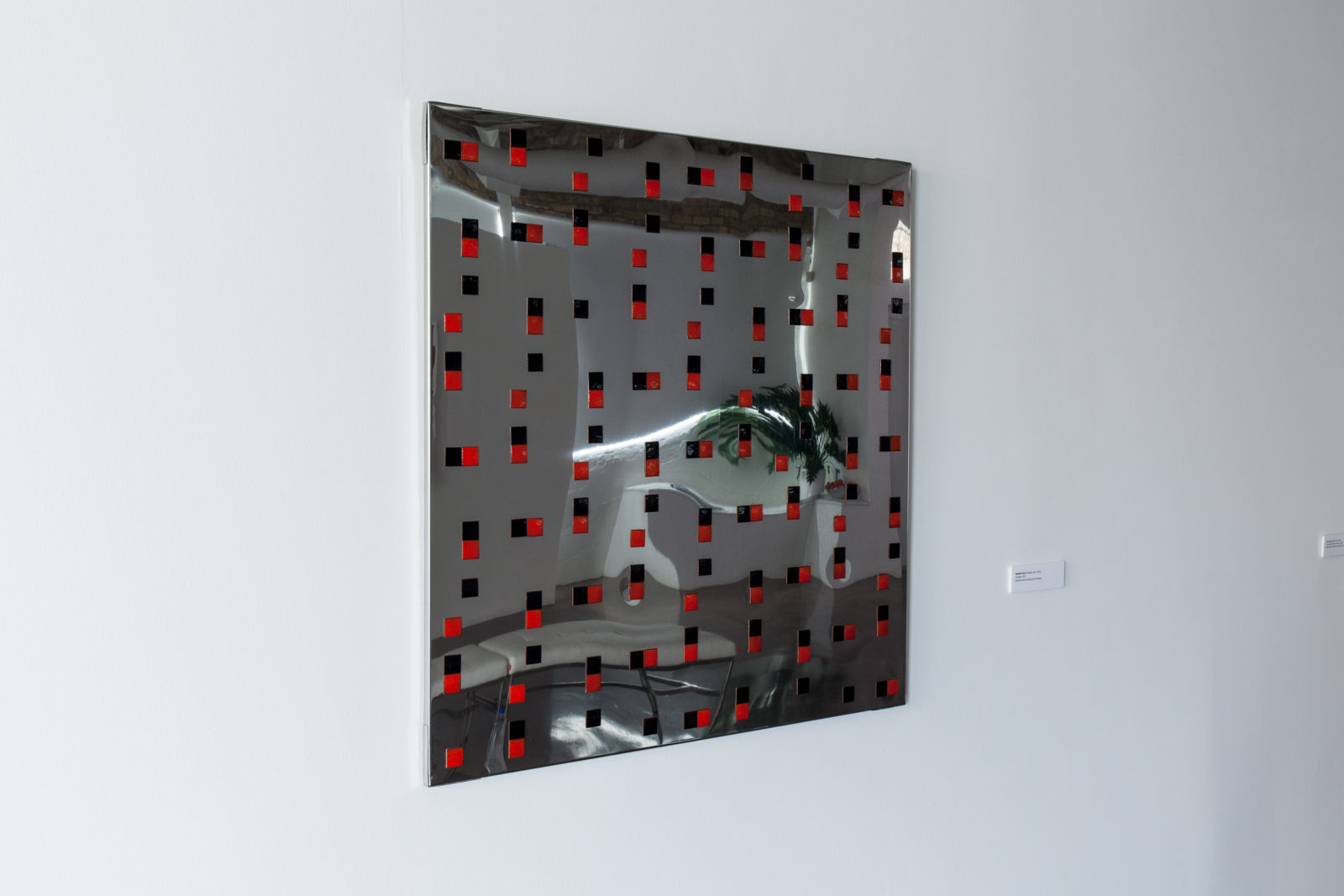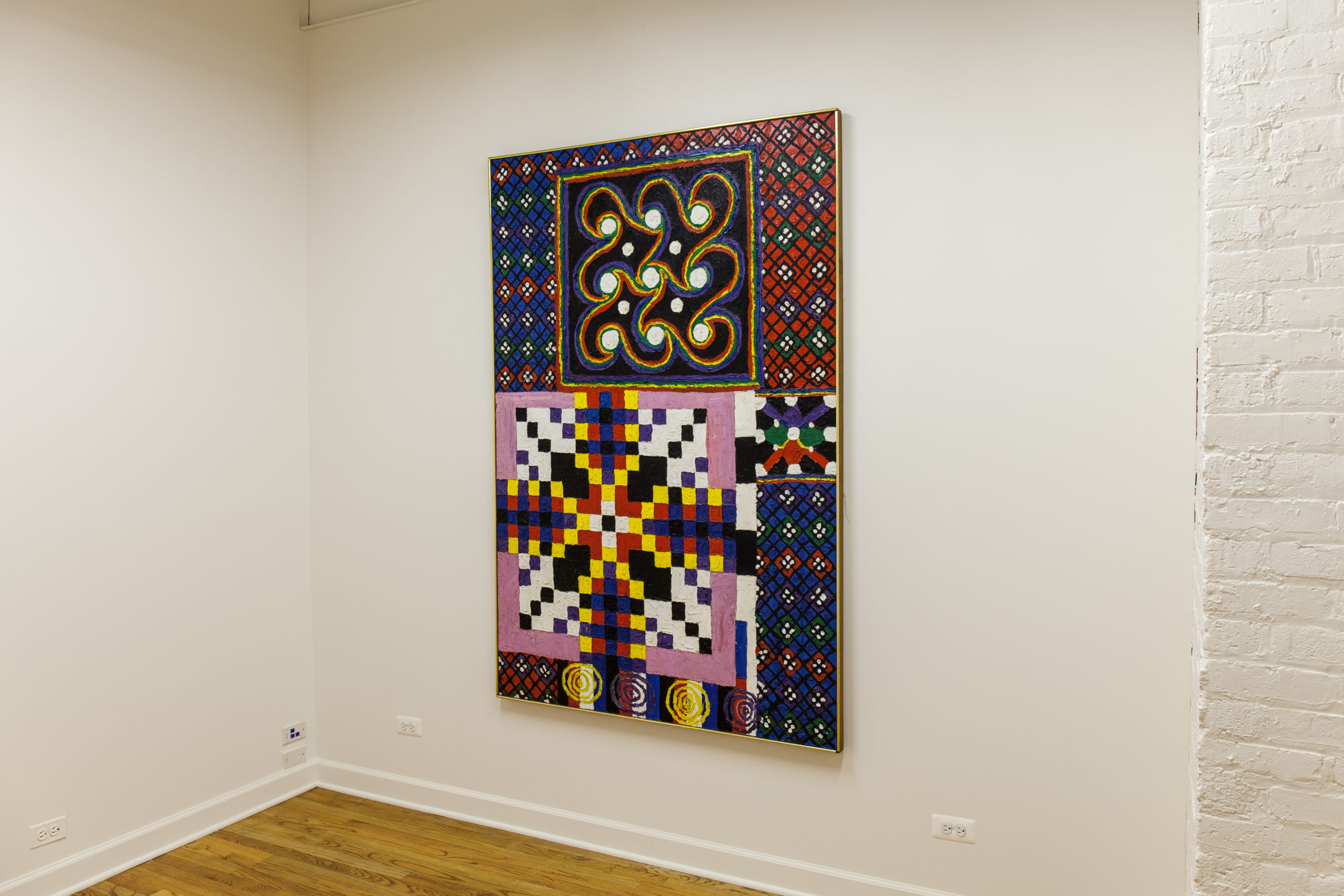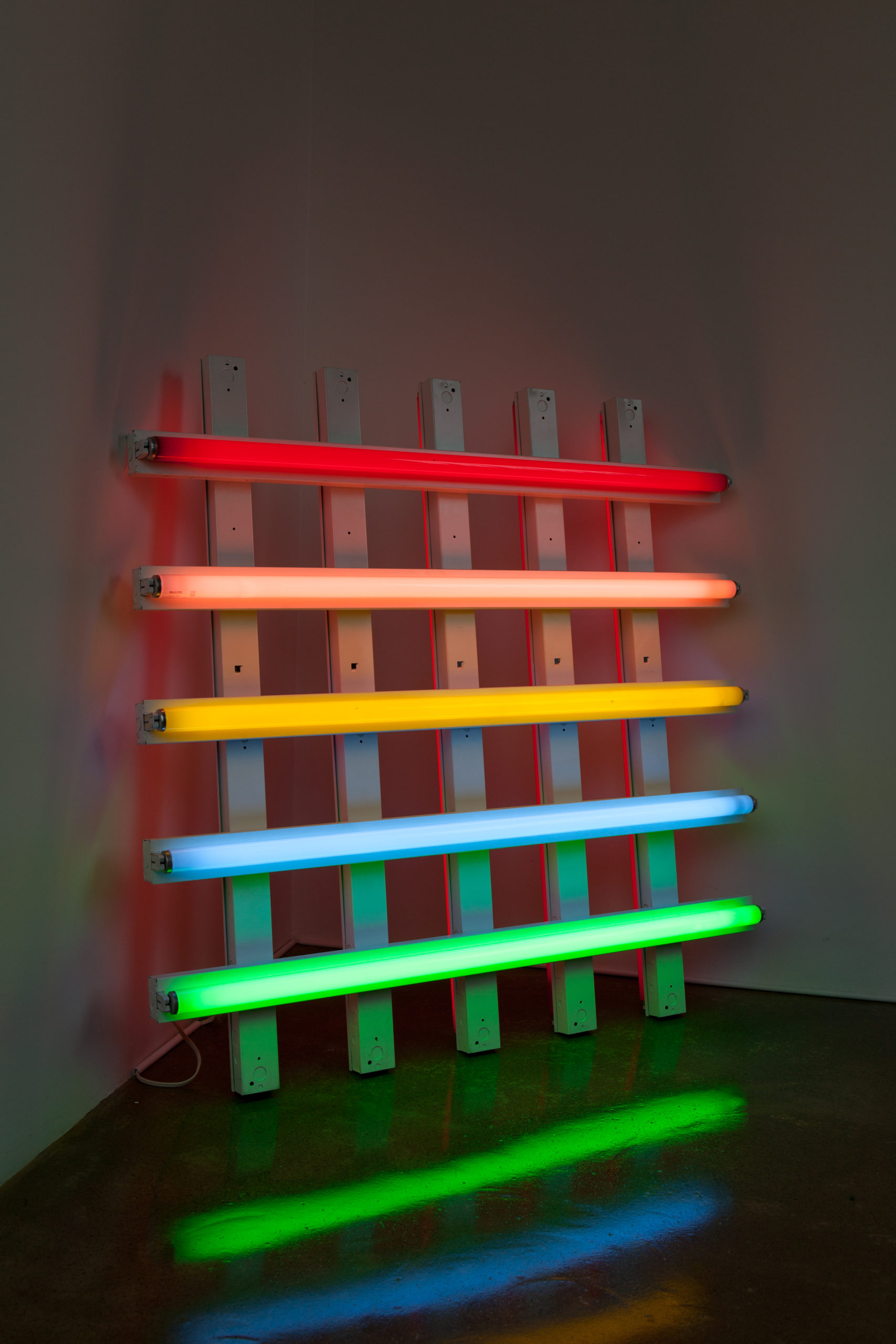Fall 2014 – Summer 2015
The Light and Space movement (originated in the 1960s) coincided with the development of digital technology and modern computer programming, and in recent years artists have adapted hi-tech processes in greater pursuit of altering a viewer’s perception using subtle or profound shifts in color, scale, luminosity and spatial illusion.
Light/Space/Code: How Real and Virtual Systems Intersect reveals the evolution of Light and Space art in the context of emerging technologies over the past half century. The exhibit begins by identifying pre-digital methods of systems-style thinking in the work of geometric and Op painters, when radiant pigments and hypnotic compositions inferred the power of light. Then, light sculpture introduces the medium of light as an expression of electronic tools. Finally, software-generated visualizations highlight advanced work in spatial imaging and cyberspace animation. Several kinetic and interactive works extend the reach of art into the real space of viewer participation.
A key sub-plot of Light/Space/Code concerns the natural world and its ecology. Since the Light and Space movement is an outgrowth of a larger environmental art movement (i.e., Earthworks), and its materials are directly drawn from natural phenomena, Light and Space artists address the contemporary conditions of organisms and their habitation systems on this planet. This conceptual step from systems art to ecosystems is important. Toward this end, artists have harnessed nature as a tool and theme, including gravity (Morris Louis), fire (Spencer Finch), flora (Jennifer Steinkamp), wind (Robert Rauschenberg), soil (John Gerrard), the cosmos (Leo Villareal and Alfred Jensen) and humankind (Jim Campbell).
Visual art and the natural sciences have long produced fruitful collaborations. Even Isaac Newton’s invention of the color wheel (of visible light spectra) has aided visual artists immensely. Artists and scientists share a likeminded inquiry: how we see. Today’s art answers that question in tandem with the expanded scientific fields of computer engineering, cybernetics, digital imaging, information processing and photonics.
